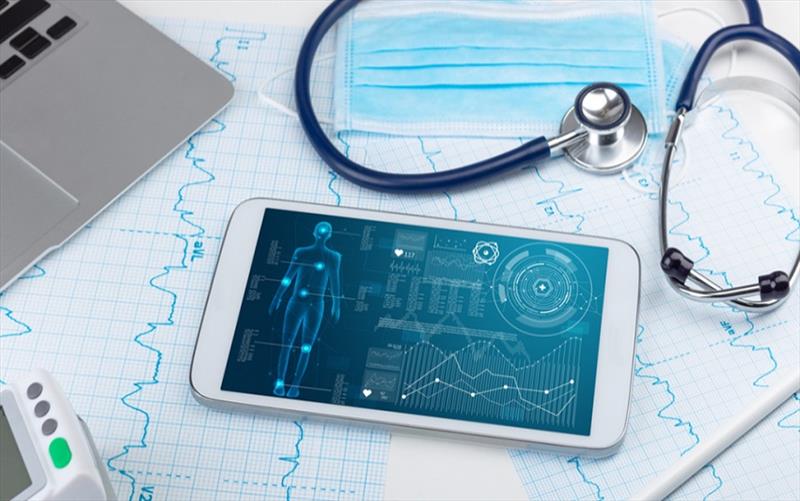
Because it provides solutions that save time, lower errors, and increase overall efficiency, medical software has emerged as a vital instrument in the healthcare industry. These technologies give healthcare workers the ability to efficiently manage workloads while upholding standards of high-quality care by automating repetitive operations, improving communication, and offering actionable insights.
The use of medical software in healthcare operations will only increase as technology develops, assisting facilities in meeting the ever-increasing expectations and difficulties. Investing in strong medical software is not merely a choice for healthcare professionals looking to increase efficiency; it is essential to succeeding in the fast-paced world of today.
One of the most demanding industries is healthcare, where productivity and efficiency are essential to providing high-quality patient care. Healthcare employees struggle more and more to manage their time and tasks due to expanding workloads, complicated administrative procedures, and constantly shifting compliance requirements. Enter medical software—a game-changing tool that has revolutionized how healthcare providers operate, helping them manage workloads effectively while enhancing patient outcomes.
In this blog, we’ll explore how medical software boosts productivity for healthcare staff and transforms daily operations in medical facilities.
1. Streamlined Scheduling and Appointment Management
One of the most time-consuming administrative duties in the medical field is scheduling. This procedure is made easier by medical software, which provides automatic scheduling options.
How It Helps:
It lowers phone volumes by enabling patients to make appointments online.
Reduces the number of no-shows by sending out automated email or SMS reminders.
Allows staff schedules to be changed in real time to account for cancellations or emergencies.
Increased Productivity:
Healthcare personnel can concentrate more on patient care and less on logistical coordination by automating scheduling.
2. Efficient Electronic Health Records (EHR) Management
A key component of contemporary medical software is Electronic Health Records (EHR) systems. They give medical personnel immediate access to thorough patient data.
How It Assists:
Centralizes medical history, test results, and patient records.
Minimizes manual record-keeping and paperwork.
Makes it possible for departments or institutions to quickly share patient data.
Increased Productivity:
Staff members can visit more patients and provide better treatment since faster data access cuts down on the time needed to get records.
3. Enhanced Communication and Collaboration
Healthcare workers can communicate easily with one another thanks to medical software, which keeps everyone informed on patient care.
How It Assists:
Facilitates internal communication by integrating secure messaging platforms.
Offers shared dashboards for monitoring patient assignments and progress.
Facilitates remote consultations through telemedicine technologies.
Increased Productivity:
Workflow runs more smoothly when there are fewer delays, mistakes, and misunderstandings due to real-time communication and collaboration.
4. Simplified Billing and Claims Processing
Healthcare workers may become overwhelmed by the time-consuming and error-prone tasks of billing and insurance claims. These procedures are automated by medical software to guarantee precision and speed.
How It Helps:
Produces bills and invoices automatically using treatment records.
Electronically handles claims processing and insurance eligibility verification.
Identifies mistakes to cut down on rework and claim denials.
Increased Productivity:
Employees can devote more time to patient-facing duties by lowering manual labor and increasing billing accuracy.
5. Intelligent Workload Management
Advanced medical software assists healthcare organizations in efficiently allocating workloads by utilizing analytics and artificial intelligence.
How It Helps:
Monitors employee availability and allocates work appropriately.
Keeps an eye on patient flow to maximize resource use.
Gives information on workload bottlenecks at peak hours.
Productivity Boost:
By distributing tasks intelligently, no employee is overworked, resulting in a more harmonious and effective workplace.
6. Training and Compliance Tracking
Without the right resources, it can be very difficult to stay on top of regulatory standards and continuous personnel training. These procedures are made simpler by medical software.
How It Helps:
Monitors compliance changes, training due dates, and employee certifications.
Gives users access to training materials and instructions whenever they choose.
Creates audit compliance reports.
Productivity Gain:
By automating compliance tracking, employees can save time and lower their chance of facing fines for regulatory violations.
7. Inventory and Resource Management
Maintaining smooth operations depends on effective management of medical equipment and supplies. Inventory control relies heavily on medical software.
How It Helps:
Keeps track of inventory levels and notifies employees when supplies are running short.
Keeps track of maintenance plans and equipment usage.
Automatically creates purchase orders in accordance with inventory thresholds.
Increased Productivity:
Healthcare personnel can concentrate on providing continuous patient care when there are fewer supply shortages and simplified procurement.
8. Improved Patient Engagement
Through portals and communication tools, medical software improves patient engagement while lightening the strain for medical personnel.
How It Helps:
Gives patients safe access to their medicines, lab results, and medical records.
Allows patients to email or chat with healthcare professionals.
Automatically sends follow-up reminders for prescription refills or checkups.
Increased Productivity:
Staff members can focus their time on more important duties by enabling patients to take charge of some parts of their care.
9. Data Analytics for Informed Decision-Making
Medical software gives healthcare professionals strong data analytics capabilities to help them make evidence-based decisions.
How It Helps:
Examines patient data to find patterns and trends, such reoccurring problems or prevalent diagnoses.
Creates thorough reports to track employee performance, patient results, and facility effectiveness.
Provides predictive analytics to foresee patient requirements and adjust resource allocation accordingly.
Productivity Boost:
Healthcare managers and employees may make quicker, more informed decisions that optimize processes and enhance results when they have access to actionable insights.
10. Customizable Workflows for Specific Needs
Because of the versatility of modern medical software, healthcare organizations can customize workflows to meet their specific needs.
How It Helps:
Saves time during patient visits by offering clinical documentation templates that may be customized.
Facilitates the integration of instruments tailored to a particular expertise, like laboratory management software or diagnostic imaging systems.
Adjusts to the size and kind of the facility, be it a big hospital or a tiny clinic.
Increased Productivity:
Customized processes guarantee that employees spend more time on their primary duties and less time adjusting to generic systems.